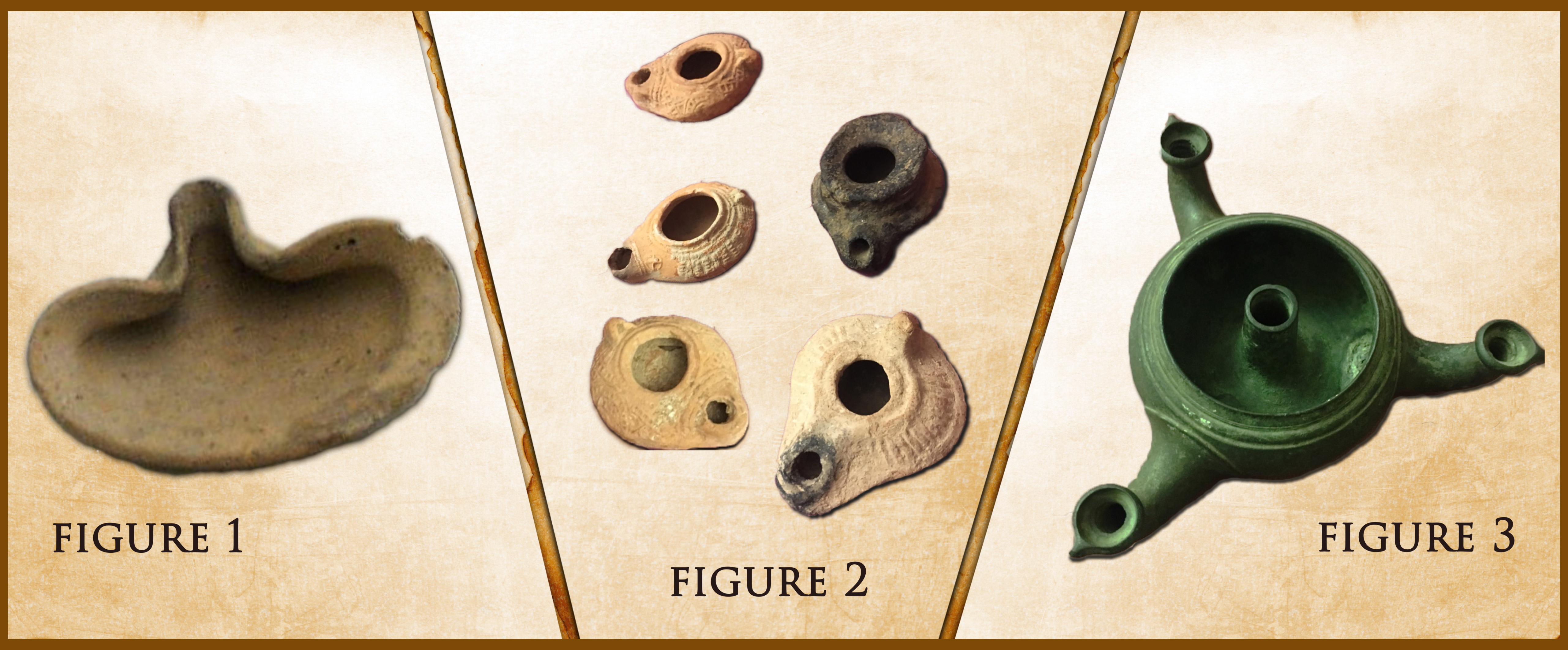Clay Oil Lamps
Roman, circa 2nd-3rd century AD
In 1931 after retiring from church ministry, Frank and Barbara Bowen traveled on what was to be the first of several trips to the Holy Land. Motivated by a desire to make the Bible and its culture accessible to those who might never visit the Middle East, Mr. and Mrs. Bowen began collecting artifacts. With each trip, they added more to their collection including objects from Palestine, Syria, Lebanon, Transjordan, and even from the Royal Tombs of Egypt. Among those antiquities were many small vessels vital to the daily life of ancient civilizations: oil lamps.
These necessary pieces of practical technology were used universally by the ancient peoples of Greece, Italy, Egypt and more. The earliest lamps were carved from stone or made of clay; other materials included various metals, the most popular of which was bronze. Oil lamps also served as a status symbol. The poor usually had a plain bowl and couldn’t always afford to light a lamp every day. Because metal was considered a higher quality material, wealthier citizens owned more ornate, metal lamps with multiple mouths; these lamps required more wicks and oil, making them more costly to use.
The standard design for oil lamps comprised of a wick, fuel and a reservoir to hold the fuel. The wicks were made of plant fibers such as linen, papyrus and flax. Early lamps entailed a flat, saucer-like basin that was pinched at the top creating a place for the wick to rest (figure 1). With this open design came the risk for oil spillage—an issue supposedly resolved by the Greeks, who developed a closed vessel. Lamps eventually evolved to include multiple spouts allowing for more than one wick and a brighter output (figures 2 and 3).
Ancient peoples most often used olive oil as fuel. Besides being relatively odorless, olive oil generated less smoke and soot and burned cleaner than alternative fuels such as animal fat, beeswax, fish oil or oils from sesame, nuts and radish seed. Burning fuel required vigilant supervision because of the potential for fire and smoke; special niches were designed in the home specifically to hold oil lamps and other fire-producing utilities like stoves and ovens. If a lamp was placed on a table, it would be positioned on top of another vessel that would collect any spilling oil.
Just like our light fixtures today, ancient lamps primarily functioned as a source of light both indoors and outdoors. They provided light for daily household activities, businesses, and streets; they were used at soldier encampments and occasionally by fishermen for evening fishing expeditions. Lamps played an important, even symbolic role at weddings, funerals and in the synagogues. For example, sometimes ancient people would bury an oil lamp with the dead to light the deceased’s journey in the afterlife.
Understanding the importance and use of oil lamps illuminates the Biblical parables of The Lost Coin (Luke 15) and The Ten Virgins (Matthew 25)—a story of five wise virgins who packed extra oil while five foolish virgins failed to plan ahead. Matthew does not tell us at what time the women began their vigil for the bridegroom; however, when the bridegroom appeared at midnight, the virgins needed to “trim their lamps” by adding more oil and cutting the wick indicating they had been waiting for some time. Because the foolish virgins neglected to bring extra oil, they needed to leave and purchase more; thus they missed the opportunity to enter the wedding banquet with the bridegroom. Thanks to Frank and Barbara Bowen’s collection (now part of the Museum & Gallery), many biblical passages come alive to the modern world.
To learn more about the Bowens and their collection, visit here.
Rebekah Cobb, former M&G Guest Relations Manager
Bonnie Merkle, M&G Database Manager and Docent
Published in 2018
